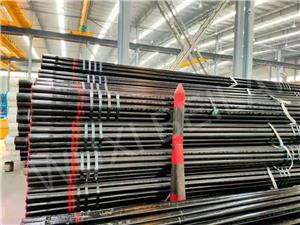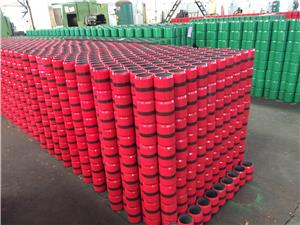Technical requirements for piston rods in the oil and gas industry
The oil and gas industry is an important part of the global energy industry. Its extraction, processing, transportation and other links all rely on highly precise and reliable mechanical equipment. The piston rod, as a key transmission component in these equipments, is responsible for multiple tasks such as transmitting power, maintaining seals, and ensuring stable operation. Therefore, the technical requirements for the piston rod are extremely strict.
1. Material requirements
High-strength alloy steel or stainless steel: The piston rod should be made of high-strength alloy steel or stainless steel containing molybdenum, cobalt, chromium and other elements to ensure that it has sufficient strength and corrosion resistance. These materials resist the corrosive media found in oil and gas and extend the service life of the piston rod.
No surface defects: The surface of the piston rod should be free of scratches, cracks and other defects to ensure its sealing performance and wear resistance.
2. Processing accuracy and surface quality
High-precision processing: The processing accuracy of the piston rod is extremely high, and its surface roughness needs to reach Ra0.4~0.8μm to ensure a tight fit with the seal or sealing ring and reduce leakage and friction damage.
Coaxiality requirements: The coaxiality tolerance of the outer diameter of the piston rod to the inner hole and sealing groove must be within 0.02mm to ensure the stability and reliability of the piston rod during movement.
Rolling processing: Piston rods often use rolling processing technology to improve their surface corrosion resistance, wear resistance and fatigue strength. After rolling, a cold work hardening layer is formed on the surface, which reduces the elastic and plastic deformation of the contact surface of the grinding pair and improves the matching properties and service life.
3. Performance requirements
Sufficient strength, stiffness and stability: The piston rod needs to withstand the thrust from the piston and other external forces, so it must have sufficient strength, stiffness and stability to ensure its safety and reliability during use.
Good wear resistance: Since the piston rod moves frequently in the oil and gas industry and may be corroded by corrosive media, its wear resistance is extremely demanding.
Strong corrosion resistance: The piston rod needs to have good corrosion resistance to resist the corrosive media in oil and gas and extend its service life.
4. Other requirements
Easy to disassemble and assemble: The structural design of the piston rod should facilitate the disassembly and assembly of the piston for easy maintenance and replacement.
Reliable connection: The connection between the piston rod and the piston or other parts must be reliable to prevent loosening and falling off to ensure the normal operation of the equipment.




